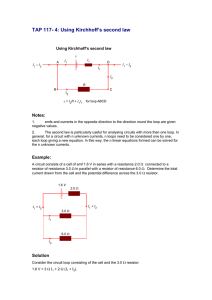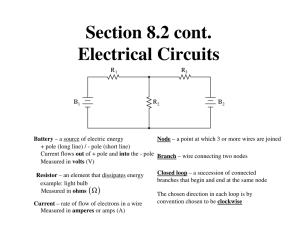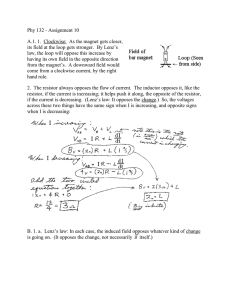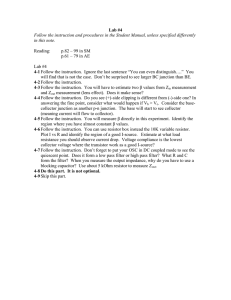(I1 – I2) R2 = 0 or VB = I1 - UCSD Department of Physics
advertisement
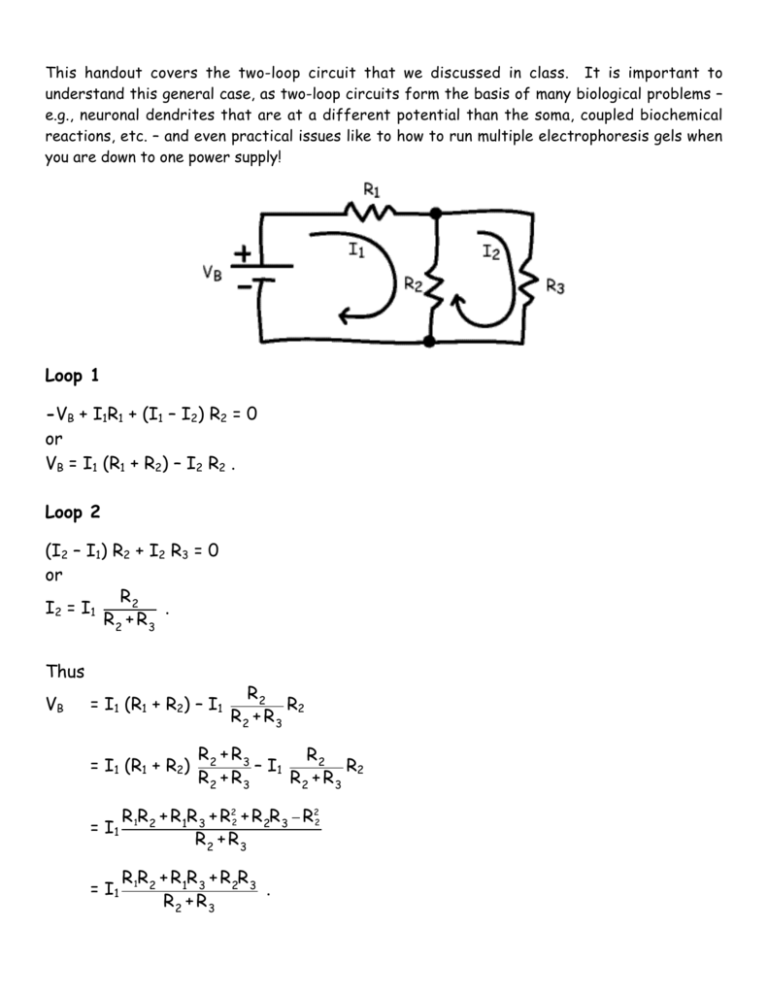
This handout covers the two-loop circuit that we discussed in class. It is important to understand this general case, as two-loop circuits form the basis of many biological problems – e.g., neuronal dendrites that are at a different potential than the soma, coupled biochemical reactions, etc. – and even practical issues like to how to run multiple electrophoresis gels when you are down to one power supply! Loop 1 -VB + I1R1 + (I1 – I2) R2 = 0 or VB = I1 (R1 + R2) – I2 R2 . Loop 2 (I2 – I1) R2 + I2 R3 = 0 or R2 I 2 = I1 . R2 + R 3 Thus VB = I1 (R1 + R2) – I1 = I1 (R1 + R2) R2 R2 R2 + R 3 R2 + R 3 R2 – I1 R2 R2 + R 3 R2 + R 3 R 1R 2 + R 1R 3 + R22 + R 2R 3 − R22 = I1 R2 + R 3 = I1 R 1R 2 + R 1R 3 + R 2R 3 . R2 + R 3 Thus I1 = VB R2 + R 3 R 1R 2 + R 1R 3 + R 2R 3 I2 = VB R2 + R 3 R2 R 1R 2 + R 1R 3 + R 2R 3 R 2 + R 3 = VB R2 R 1R 2 + R 1R 3 + R 2R 3 I1-I2 = VB = VB and I1-I2 = VB R2 + R 3 R2 - VB R 1R 2 + R 1R 3 + R 2R 3 R 1R 2 + R 1R 3 + R 2R 3 R3 . R 1R 2 + R 1R 3 + R 2R 3 R2 + R 3 R2 - VB R 1R 2 + R 1R 3 + R 2R 3 R 1R 2 + R 1R 3 + R 2R 3 Current Division Current through R1 is I1, which is the total current supplied by the battery. Current through resistor R2 is (I1 – I2) = I1 Current through resistor R3 is I2 = I1 R3 R 2 + R 3 R2 R 2 + R 3 For the in-class demonstration, we let R ≡ R1 = R2 = R3, I1 = VB 2 2 , e.g., voltage drop across R1 is I1R1 = VB . R 3 3 I2 = VB 1 1 , e.g., voltage drop across R3 is I2R3 = VB; same as the drop across R2. R 3 3 How well do these match with the measured values?
